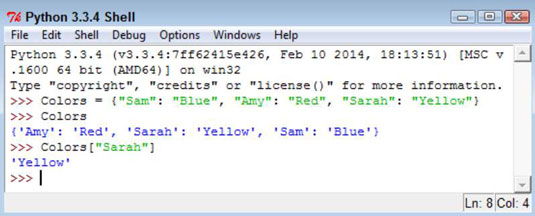
If you do want to use an ordered dictionary, make use of collections.OrderedDict, which behaves like just like the standard dictionary but is guaranteed to maintain ordering regardless of what version of Python you are using.
Dictionaries in python code#
Unless you make explicit that your code is incompatible with versions of Python prior to Python 3.6, write your code as if the dictionary is unordered! Python has a built in dictionary type called dict which you can use to create dictionaries with arbitrary. This is great, right? Wrong! If you write code in Python 3.6 that relies on the fact that dictionaries are ordered, your algorithm will almost certainly produce the wrong results if you run it using Python 3.5 or earlier! Worst of all, it very unlikely that this will raise any error in your code so the bug will persist silently - this is very tough to catch! Given a word, you can look up its definition.

The following is a summary of the time complexities associated with various common operations using a dictionary (according to its implementation in CPython) - note all the \(\mathcal # this will always produce the same ordering of keys > The values of a dictionary can be any type of Python data. In addition to being flexible and versatile, the dictionary’s functions manage to be quite efficient as well. Any key of the dictionary is associated (or mapped) to a value. Time Complexities of the Dictionary’s Functions



 0 kommentar(er)
0 kommentar(er)
